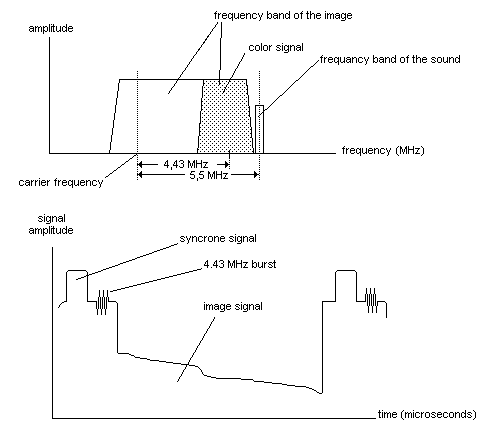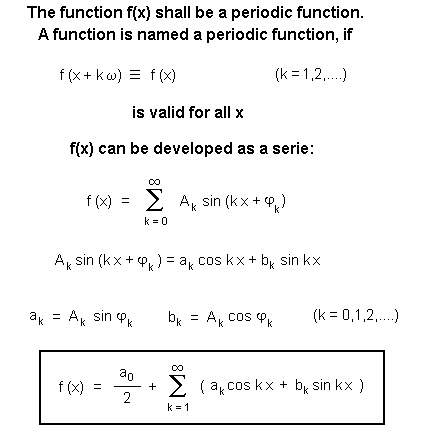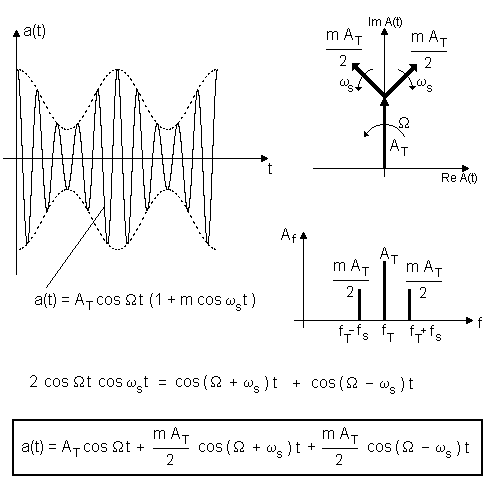|
Some fundamental regardings of the
principle function of color television
The television signal (the picture signal with its line sync pulses), described in the picture right, is in frequency depiction a line spectrum (remember Fourier series as described in the picture left below or La Place transformation between time- and frequency functions), because the entire image signal is a periodic signal except something moves on the picture. But the motion of parts of the picture are mostly so slow, that the lines of the line spectrum only move 1 or 2 Hz left and right from its original value. Otherwise on a faster moving image you would not recognize any detail. Therefor you obtain in coarse approximation a steady line spectrum for the black and white signal and one for the color signal. You can mix them together modulated on different carrier frequencies, as described in the picture right below, if you choose the color carrier frequency so, that all upper waves of the color spectrum are non-integer multiples of all upper frequencies of the black-and-white-signal. After demodulation you obtain a black-and-white signal mixed with upper waves of the color signal and vice versa, but you don't see them, because these signals run asynchronous and non-repetitive over the screen. Therefor the color carrier frequencies are chosen either by NTSC 3,579545 MHz or by PAL 4,43361875 MHz.
|

|






